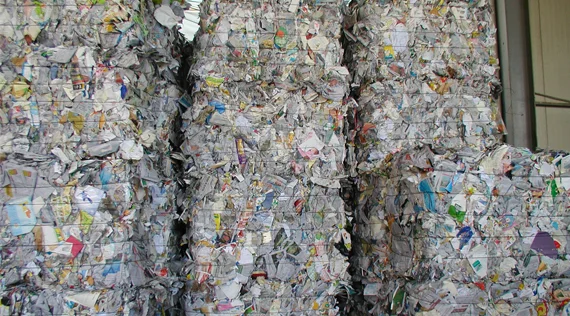
SEATTLE (Scrap Monster): Researchers at the University of Michigan have discovered a way to recycle PVC, one of the most produced plastics, into a usable material.
PVC, or polyvinyl chloride, is the most produced plastic in the country, and the third most produced in the world.
People encounter PVC on a daily basis, as there are several everyday items made from this plastic. Most of the plastic used for tubing, blood bags, masks, most of the piping in modern plumbing, window frames, housing trims, siding and flooring are made from PVC, according to a release from the University of Michigan.
In addition to this PVC coats electrical wiring and is often used to make shower curtains, tents, tarps and clothing.
So, PVC is found in many places, and it has a zero percent recycling rate in the country due to it releasing toxic components during the recycling process.
Two researchers at the University of Michigan, Danielle Fagnani, study first author, and Anne McNeil, a principal investigator, found a way to use recycle PVC without using heat.
"PVC is the kind of plastic that no one wants to deal with because it has its own unique set of problems," said Fagnani, who completed the work as a postdoctoral researcher in the U-M Department of Chemistry. "PVC usually contains a lot of plasticizers, which contaminate everything in the recycling stream and are usually very toxic. It also releases hydrochloric acid really rapidly with some heat."
The research team discovered that the plasticizer could be used to break down PVC through electrochemistry, and that this method releases hydrochloric acid at a slower and more controlled rate.
The different components can then be used for different chemical reactions, and for some materials, scientists are still searching for a way to use them.
"It's a failure of humanity to have created these amazing materials which have improved our lives in many ways, but at the same time to be so shortsighted that we didn't think about what to do with the waste," McNeil said. "In the United States, we're still stuck at a 9% recycling rate, and it's only a few types of plastics. And even for the plastics we do recycle, it leads to lower and lower quality polymers. Our beverage bottles never become beverage bottles again. They become a textile or a park bench, which then ends up in a landfill."
Courtesy: www.cbsnews.com
| Copper Scrap View All | |
| Alternator | 0.31 (0) |
| #1 Copper Bare Bright | 3.70 (0.05) |
| Aluminum Scrap View All | |
| 356 Aluminum Wheels (Clean) | 0.71 (0) |
| 6061 Extrusions | 0.62 (0) |
| Steel Scrap View All | |
| #1 Bundle | 475.00 (0) |
| #1 Busheling | 495.00 (0) |
| Electronics Scrap View All | |